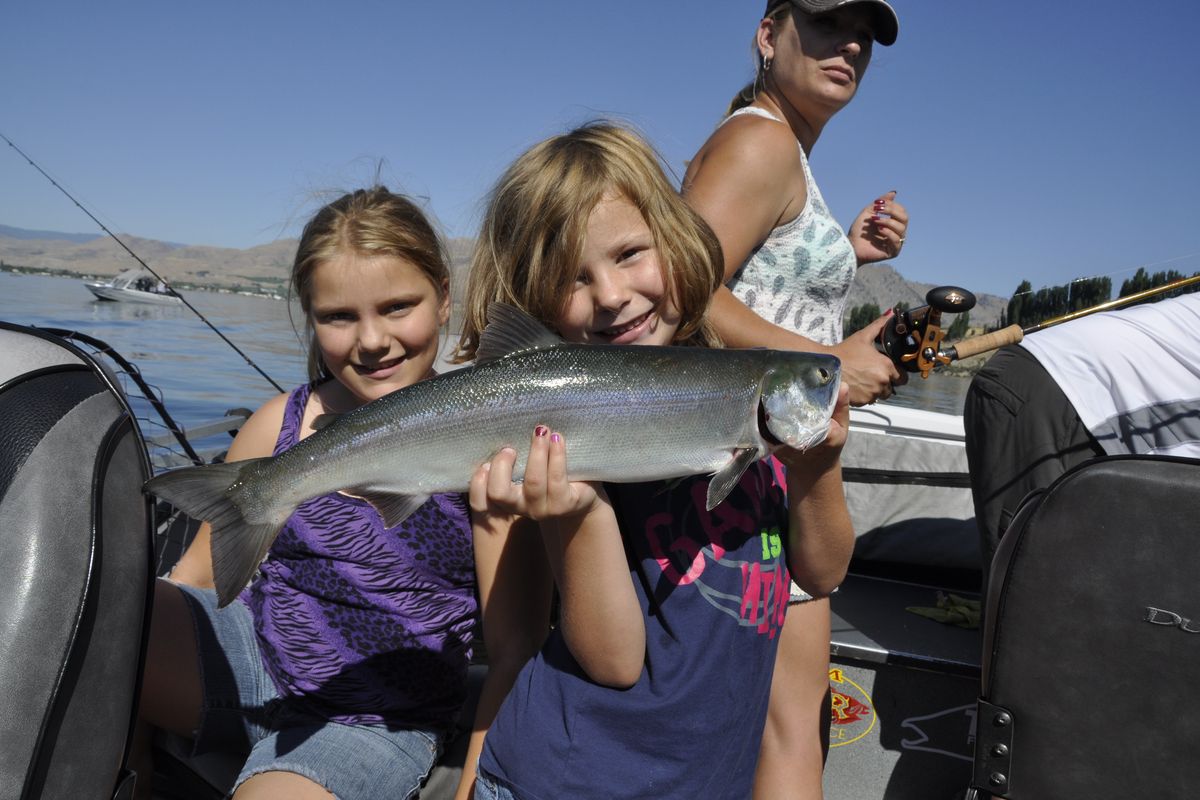Emergency sockeye closure set for Sunday in Upper Columbia

The sockeye salmon fishing season will come to an early end on the upper Columbia River after this weekend, Washington Fish and Wildlife Department officials announced today.
Half of this year’s big run toward spawning grounds already has died because of warm water conditions, they said.
Anglers will not be allowed to retain sockeye they might catch from Rocky Reach Dam upstream to Chief Joseph Dam starting Sunday a half hour after sunset. The rule does not affect fishing for summer chinook.
“Elevated water temperatures in the Columbia River have resulted in higher-than-expected mortalities of sockeye salmon returning to the Okanogan River,” fisheries officials said in the rules announcement.
Fish destined to return to the Okanogan River have swam up the Columbia River and are staging above the Rocky Reach Dam. The fishing closure for sockeye is needed, officials said, to protect these fish from harvest and allow as many survivors as possible to migrate to their spawning grounds when water temperatures improve.
Jeff Korth, department regional fisheries manager in Ephrata, proposed the closure on Thursday and the agency fisheries directors made the decision today.
“Never in my entire (29-year) career have I seen anything like this,” Korth said. “A minimum of 300,000 adult salmon have died or will perish going up the river before reaching spawning grounds.
“We lost half of the run in the lower river after they hit the warmer-than-usual water. We’re lucky this is a big run.”
More than 500,000 sockeye salmon returned to the mouth of the Columbia River this year, among the largest runs in recent history. The fish are bound for the Snake River, Lake Wenatchee, and Okanogan River sockeye runs.
The warmer than usual water temperatures are promoting bacterial infections in the sockeye, Korth said.
“These salmon are constantly getting scraped, scratched and poked as they go over rocks and climb fish ladders and escape predators,” he said. “That’s not a big problem in cold water, but in warm water the bacteria that’s in an aquatic system gets round the wounds and proliferates faster. We’re seeing big gaping sores on these fish.”
Summer chinook, which are moving up the Columbia in record numbers, are not as severely impacted by the warm water, Korth said.
“Chinook are bigger and a little sturdier,” he said. “Their energy requirements are different. Sockeye are smaller salmon that race up the river. Their metabolic rates is going through the roof and they’re hitting warm water that’s short on oxygen and they’re in trouble.
“Chinook are more likely to pull off into some sort of cooler water refuge and rest. They carry more body fat and have other factors that give them a chance of going farther upstream in these conditions.”
Communities along the river are concerned about decreased business under the closure. However, with chinook still available in big numbers, many anglers are likely to re-target their species and stay on the water.
“In reality, we may be cutting the business by just a few weeks,” Korth said. “Sockeye fishing was sensational earlier, but it’s starting to go by the wayside. It won’t be long before fish condition won’t be as attractive.”
A Lake Wenatchee sockeye season, which was scheduled to open last weekend, is still a possibility, Korth said. About 12,000 of the 106,000 sockeye forecast has moved over Tumwater Dam and into the lake system. “I’m hoping we’ll get 50,000. I’m optimistic we may have a season.”
Korth’s main concern is getting some sockeye up the Okanogan River to spawn in Canada and perpetuate the run.
But the Okanogan water temperature was 84 degrees this week, more than 12 degrees warmer than sockeye can survive.
“About 15,000 sockeye tried to go up the Okanogan last week, apparently lured by temperatures that started to drop a little,” Korth said. “They all died.”
About 170,000 sockeye have climbed over Wells Dam to the Brewster pool this season. The Colville tribe purse seine and sport fishermen have caught about 50,000 of them, Korth said.
“We’ll be lucky if we get half of the remaining 100,000 or so sockeye up the Okanogan to spawn,” he said.
“My goal was to retire before ocean conditions go to hell again, but first we have to make the best out of this.”